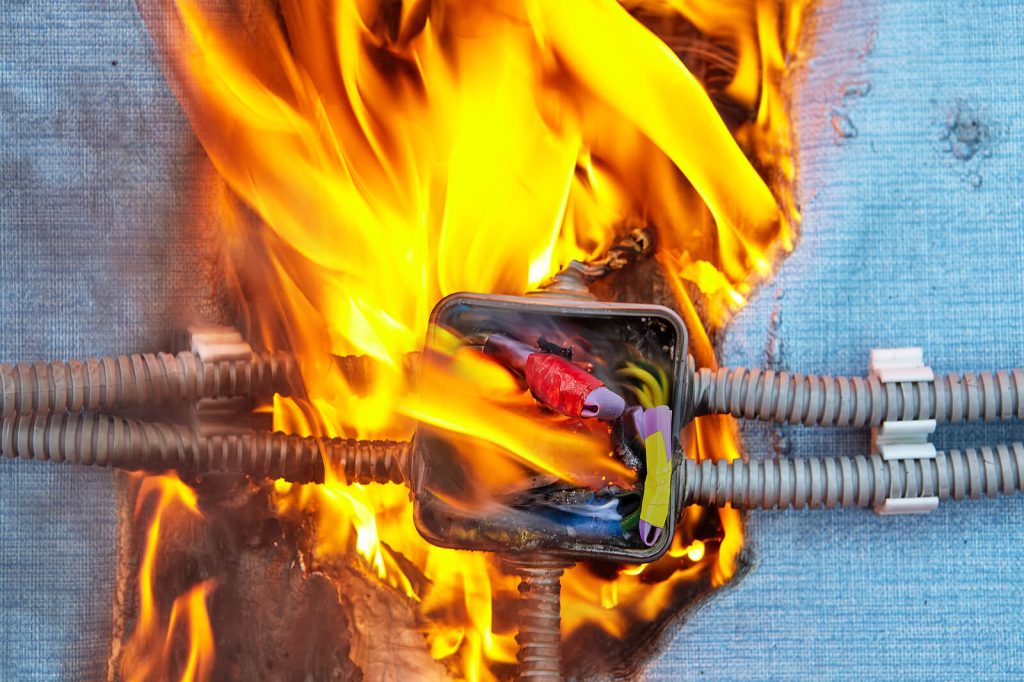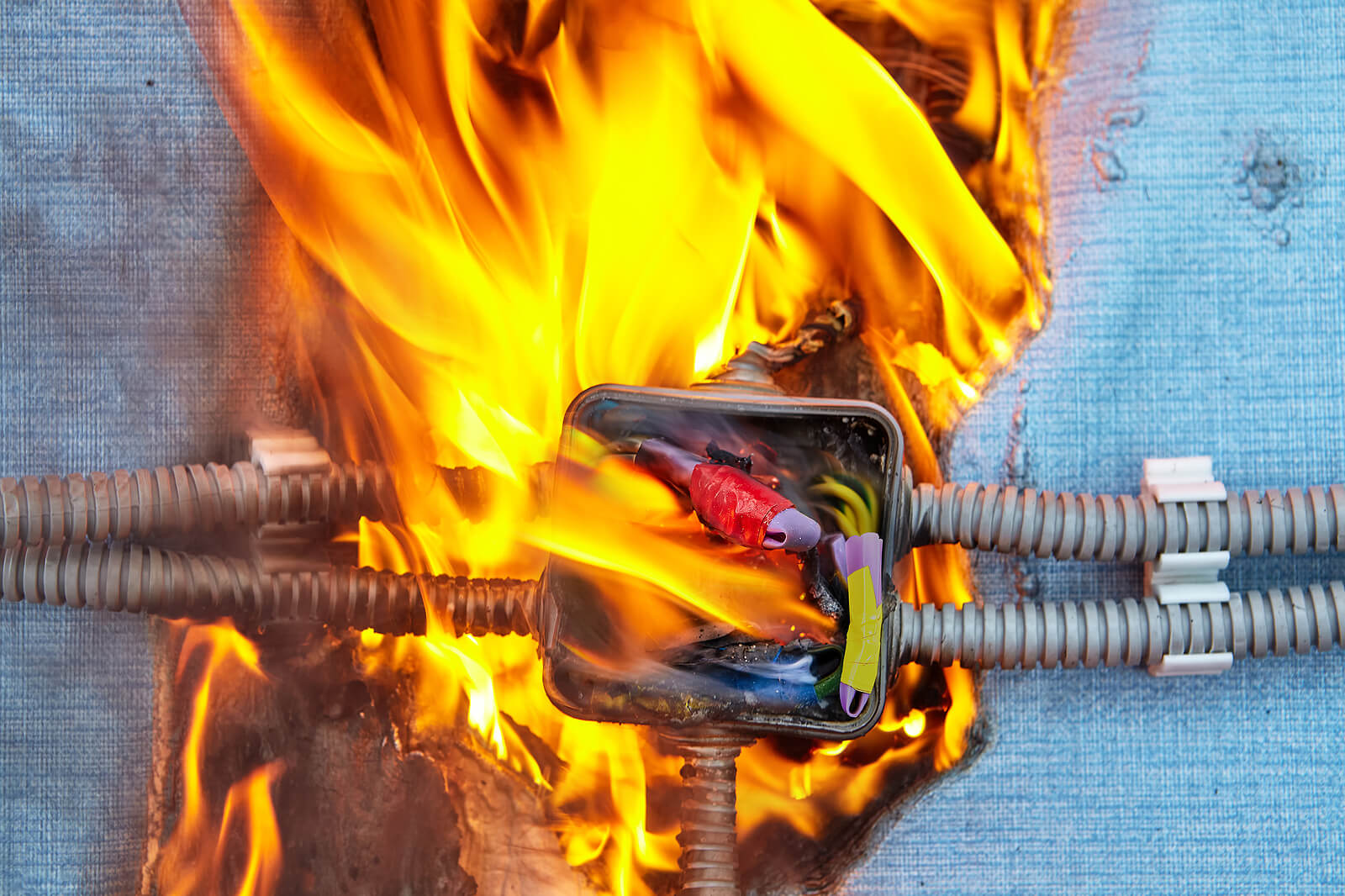Avoid Electrical Problems with These Tips
June 11, 2021

According to the Federal Emergency Management Agency (FEMA), electrical problems resulting in electrical fires occurred 24,000 in the U.S. between 2014 and 2016. These electrical fires resulted in hundreds of deaths and injuries. While residential electrical fires are often more costly than nonelectrical fires, you can easily prevent these electrical problems with the following tips.
Best Ways to Prevent Electrical Fires
To prevent an electrical fire:
- Avoid Overloading Outlets: Overloading the circuit creates heat that can spark a fire. Don’t plug in appliances/devices that exceed the outlet’s rating.
- Don’t Put Flammable Objects Near Outlets/Cords: Keep curtains, boxes, decorations, and furniture away from outlets or power cords. Short circuits and flammable materials don’t mix.
- Unplug High-Power/Heat-Producing Appliances: A heat-producing appliance, such as a toaster, kettle, or iron, should be unplugged when not in use. Also unplug anything that keeps tripping the circuit breaker or gives you a shock.
- Don’t Use Anything with a Damaged Cord: Check for frayed, cracked cords or those placed under carpets/rugs or in high traffic areas. Any cords in these situations must be replaced.
- Use Extension Cords Temporarily: Extension cords should never be used as a permanent solution as they can cause an overload.
- Match Light Bulb Ratings with Fixtures: Check the wattage of each bulb before installing it; if you see a bulb with a higher rating than the fixture is rated for, replace it.
- Install GFCI Outlets: Ground fault circuit interrupters in your kitchen, bathroom, basement, garage, workshop, and laundry room as well as outdoors protect against electrical faults, especially in the presence of water.
Recognize Signs of Trouble
If you notice these warning signs, do not ignore them. Call an electrical contractor right away.
- Burning odors from an electrical appliance/device/fixture
- Burn marks and other discolorations on switches or sockets
- Sparks when you plug something in
- A hot outlet, power cord, or appliance
- Light fixtures continue to flicker after replacing a bulb
- Circuit breakers trip or fuses blow repeatedly
- Shocks when you plug in or touch a device.
Determine How Much Power Is In Each Circuit
Branch circuits are typically rated for 15 to 20 amps. You’ll see the number near the breaker switch. To determine the load of each circuit, identify the room a particular switch controls, count the devices it serves, add up the watts used by each (including lightbulbs), and divide the total wattage by the voltage. This will tell you the amps used, which you can compare with the circuit’s rating.
Replace Worn/Outdated Wiring
Electrical wiring tends to degrade over time. Inspect your wiring for fraying, cracking, tears, or poor/missing insulation. Today’s homes have more electrical appliances running. You can avoid problems by replacing the wiring to increase capacity. Older wires are more prone to overheating and catching fire.
Replace Old Appliances
Older appliances with loose/faulty wiring is a fire hazard. Old insulation doesn’t improve your safety either. If you have old appliances, they may not meet the latest material, wattage capacity, and safety regulations, so they should be replaced. A certified electrician can further improve your safety with appliance-grade outlets and surge protection devices.
Schedule an Electrical Inspection
Throughout the Denver area, Fix-It 24/7 provides professional electrical repairs and maintenance. We employ reputable technicians who can address any problem. We’re open 24/7 so you can receive help in an emergency. Our company also specializes in surge protection, wiring and rewiring, and other electrical services for local homes and businesses. Contact us at (303) 214-0277 to request service or ask questions.
Service You Can Count On
We came from humble beginnings, having started as just a small family
business. And while we’ve experienced growth, Fix-It 24/7







